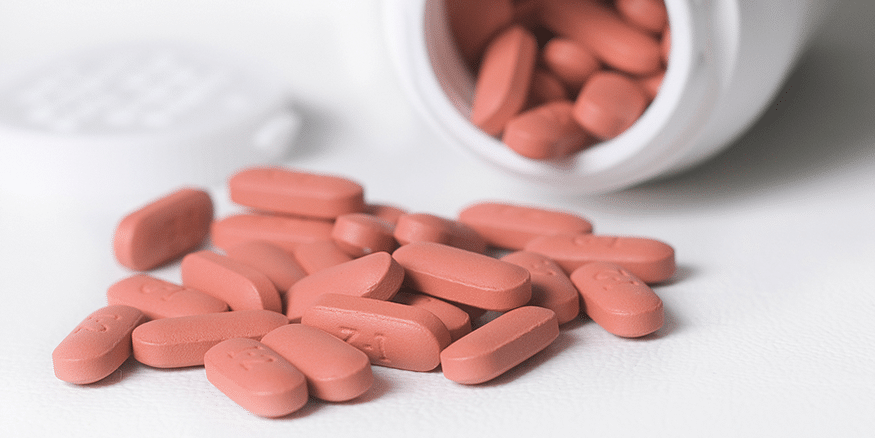
Preventing GI Damage from NSAIDs
Non-steroidal anti-inflammatory drugs (NSAIDs) are a type of medicine that relieves pain. NSAIDs inhibit the production of bodily compounds, called prostaglandins, which are responsible for inflammation and sending pain signals to the brain. Reducing prostaglandins results in less pain both from the decrease in inflammation in the injured area and from the fact that fewer pain messages are reaching the brain. Common pain relief medications such as ibuprofen (Advil®), acetylsalicylic acid (Aspirin®), and naproxen (Aleve®) are examples of NSAIDs.
While NSAIDs are effective medications with relatively few risks when taken occasionally, they can affect the gastrointestinal tract in long-term users, resulting in complications such as dyspepsia, which can range from mild to severe, and ulcers, which can cause bleeding, perforation, and obstruction. In fact, 15-30% of these long-term NSAID users are at risk of developing ulcer disease, with 2-4% of these ulcers leading to complications.1 Chronic NSAID use can even result in death, with one study estimating 7,000-16,500 individuals in the United States dying from NSAID complications each year.1
Chronic pain can have a massive influence on quality of life, and it affects so many individuals. As many as one in five Canadians experience chronic pain at any given time.2 Medications to treat pain are extremely important, and while NSAIDs can cause problems, other medications also have their own risks and complications.
In a recent analysis of many studies (meta-analysis),1 researchers set out to uncover ways to reduce the risk of gastrointestinal damage from NSAIDs, while maintaining effective pain relief. They compared typical, non-specific NSAIDs with a subgroup of NSAIDs called cyclooxygenase-2 (COX-2) inhibitors. Selective COX-2 inhibitors directly target the enzyme cyclooxygenase-2, which is responsible for inflammation and its resulting pain. The research shows that this selective inhibition causes a reduction in gastric ulcers. However, COX-2 inhibitors might cause an increase in cardiovascular events such as heart attack and stroke, so they aren’t ideal medications for many individuals. They also looked at two types of acid-reducing medications, proton pump inhibitors (PPIs) and histamine-2 receptor antagonists (H2RAs), to see if they had any protective effects when combined with NSAIDs.
The researchers observed a reduction in gastric symptoms in patients who took non-specific NSAIDs with PPIs, but the combination of COX-2 inhibitors and PPIs provided the best protection from gastrointestinal symptoms. H2RAs did not offer the same protection as PPIs.
The best course of action depends largely on the risk factors for the individual patient. In those who are at a high risk for gastrointestinal symptoms, but at a lower cardiovascular risk, it might be worth making the change to a COX-2 inhibitor with a PPI, to get the best pain reduction and fewest gastrointestinal side effects. However, in most patients, it might be safer to avoid the cardiovascular complications associated with COX-2 inhibitors. For these individuals, combining a PPI with a non-specific NSAID can offer moderate protection from gastrointestinal damage without compromising cardiovascular health.
Whichever pain relief medication(s) you take, the most important thing is to ensure you follow your physician’s instructions, and report any new symptoms or side effects as soon as you notice them.
Medication Examples
PPIs: omeprazole (Losec®), lansoprazole (Prevacid®), pantoprazole sodium (Pantoloc®), esomeprazole (Nexium®), rabeprazole (Pariet®), pantoprazole magnesium (Tecta®), dexlansoprazole (Dexilant®)
H2RAs: cimetidine (Tagamet®), ranitidine (Zantac®), famotidine (Pepcid®), nizatidine (Axid®)
COX-2 Inhibitors: celecoxib (Celebrex®)
NSAIDs: acetylsalicylic acid (Aspirin®), ibuprofen (e.g., Motrin® or Advil®), naproxen (Aleve®)
